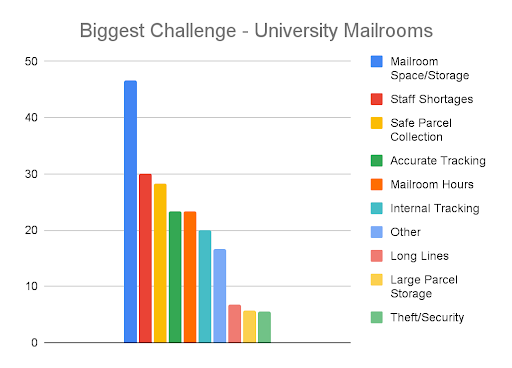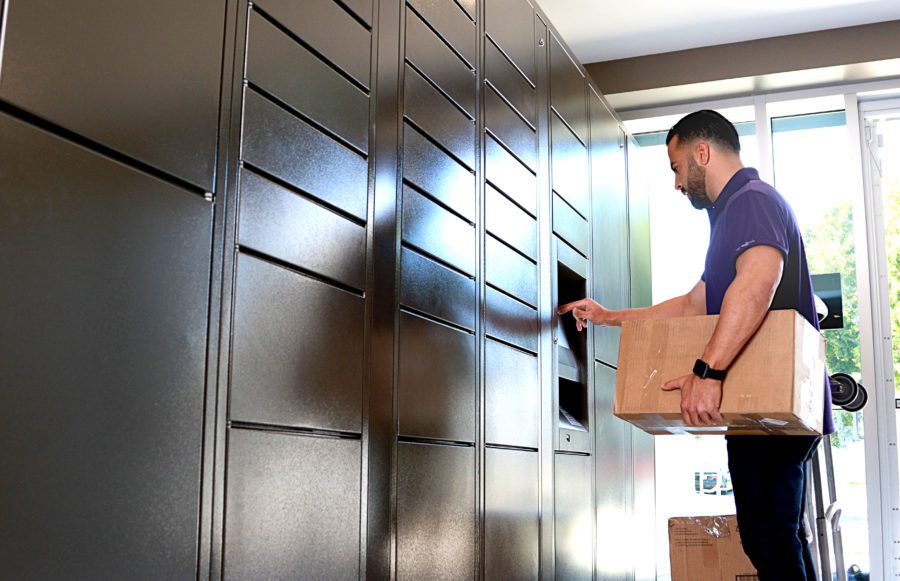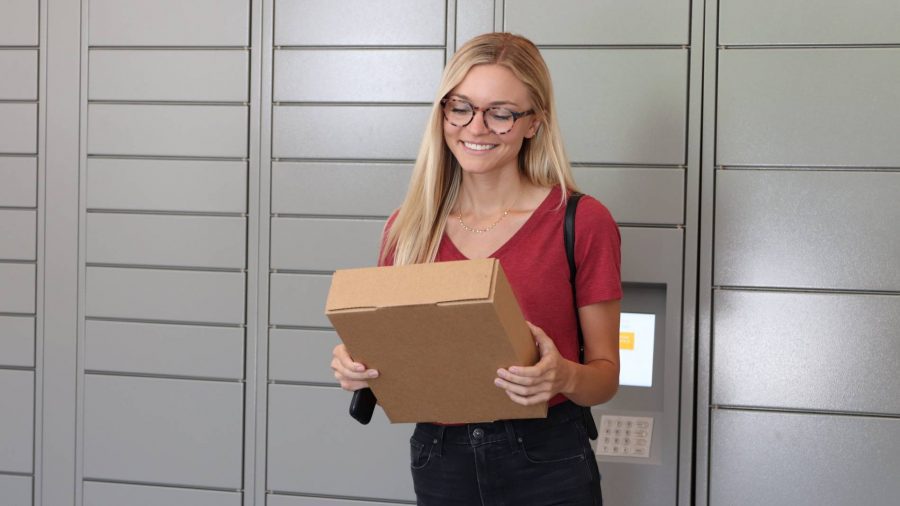
University
Increasing the Efficiency of Your Campus Mailroom Operations
Written by: Parcel Pending
4 Min Read
Published: August 30, 2021
Updated: March 29, 2023
Fall of 2021 will usher in a new meaning to the phrase “back to school”, given the emptying of many campus corridors last year. Here’s how to boost your mailroom operations to provide a safe, secure, and modern campus experience for new and returning students, staff, and faculty.
Investing in Technology to Streamline Mailroom Delivery
The recently passed COVID stimulus bill included $40 billion for higher education institutions to use to enhance student safety and invest in technology that can ensure business continuity and defray costs associated with the coronavirus1.
Ohio University, North Dakota State University, and Spalding University all elected to use a portion of their funds on smart lockers that provide a contactless and secure way to deliver and retrieve packages. Recent research conducted by Parcel Pending and Spaces4Learning revealed that although almost 42% of college administrators have already invested in smart parcel lockers, a greater number (45%) would be interested in exploring this mailroom management solution2.
Improving the College Experience While Boosting Mailroom Efficiency
Lockers not only help with mail delivery and package management, but also improve the student experience at university as well. As McKinsey & Company highlight, spending on student services has grown four times faster than that for instruction3. In essence, a service that boosts students’ well-being might be the most prudent investment during this prolonged period of uncertainty.
With lockers typically accessible 24/7, students and faculty can retrieve mail and packages on their schedule. There’s no need to wait in line or pick up during specific hours, adding to a better campus experience and improving overall customer service.
Transforming Lockers and Mail Centers into Campus Hubs
Whereas most smart lockers on campus were originally installed to assist in secure package management, delivery, and retrieval, today they’re being deployed in ways beyond mail or even the mailroom. Smart lockers now act as a central parcel distribution system for the transfer of technology equipment and accessories, library books, campus store merchandise, move-in materials and more. Examples include:
- Campus Store Merchandise: Clothing, books, electronics, gifts and more can be retrieved with zero face-to-face interaction.
- Electronics: Student laptops, tablets, and other school-owned devices can be easily disseminated and returned.
- Class Equipment: Classrooms can distribute equipment for course work and projects. Students can easily and safely return the items as well.
- On-Campus Dining: A student can simply place an order for a meal online via the university’s dining software and then pick-up their food and beverage items safely without coming in contact with anyone.
- Student Mail: Packages and regular USPS mail can be retrieved at the recipient’s convenience.
- Move-in/Move-out Materials: Items such as keys, ID cards, welcome packets and other important school materials can be shared with students via smart lockers.
- Event Tickets: Tickets for sporting events and other student activities can be distributed via smart lockers to minimize lines and contact with ticket agents.
Since so many departments can leverage smart lockers (administration, bursar, dorm rooms, and bookstores) campus administrators are finding that they can often pool various department resources for their investment. Further, lockers boost employee efficiency while decreasing staffing costs. In fact, switching to an intelligent university parcel system can boost productivity by as much as 30%!
Secure Tracking is Key
Highlighted in the research between Parcel Pending and Spaces4Learning was the need for accurate mailroom management software and package tracking. As shown below, 23% of higher education respondents noted it as one of the key challenges mailroom staff were facing last fall.

Parcel Pending by Quadient’s smart locker solutions integrate effortlessly with its own Web Tracking System (WTS) or other existing university mail tracking systems, providing complete visibility for where campus deliveries (including mail and packages) are at all times. Most importantly, it allows for all departments to track deliveries via one central database.
Another key benefit of embracing a Campus Hub solution is that the software automatically sends reminders if packages or goods haven’t been retrieved. These stale package alerts work for both the recipient and mailroom employees.
Lockers are Safe and Secure for Deliveries and Returns
The locker system is simple: inbound mail, parcels, and other goods are sorted, coded, and delivered to a secure package delivery box. Recipients are notified by email or text that a package has been delivered to the smart locker. At this point, students and staff simply enter their access code at the locker kiosk allowing for self-service parcel pick up in less than 30 seconds – without having to interact with mailroom staff or other campus employees. Often overlooked is that smart lockers also optimize and assist with the safe return of goods, whether it is back to the campus shop or library.
Prepare for Oversize Packages
Although Parcel Pending’s smart lockers can handle most package sizes and types, best practices suggest that mailroom employees prepare for the onslaught of back-to-school oversize incoming mail and packages now. Some universities, for example, leverage package rooms in tandem with lockers to create temporary overflow space while others use trucks as temporary stowage.
Lower Liability & Theft with the Campus Hub
“Porch piracy” is not limited to just homes and apartments. With almost 25% of Americans reporting being the victim of at least one package stolen, it’s also a key concern when it comes to mailroom management. Smart lockers virtually eliminate disappearing packages.
Take the crucial step into automating your mailroom by setting up your complimentary assessment here.
Sources:
- National Association of Student Financial Aid Administrators. (2021, July 14). NAFSAA Higher Education Emergency Relief Fund III (HEERF III) Reference Page. Retrieved from: https://www.nasfaa.org/heerf_iii
- Spaces4Learning & Parcel Pending by Quadient. (2020, December). Campus Operations During the Pandemic [White paper]. Retrieved from: https://spaces4learning.com/Whitepapers/2020/12/Campus-Operations-During-the-Pandemic.aspx
- Dua, André, et al. McKinsey & Company. Reimagining higher education in the United States. (2020, October 26). https://www.mckinsey.com/industries/public-and-social-sector/our-insights/reimagining-higher-education-in-the-united-states.



